| Intl. Notebook | Mar 23 2018 |



| Hollywoodland | Femmes Fatales | Mar 23 2016 |

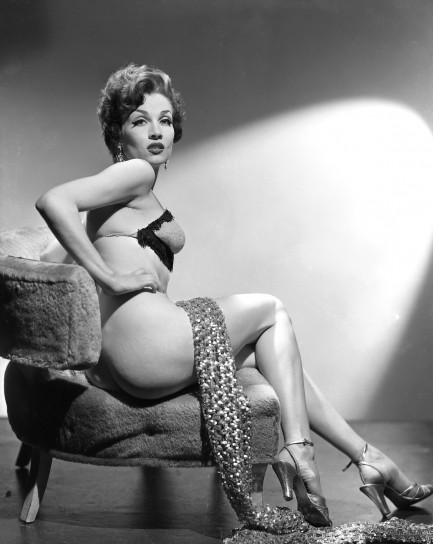
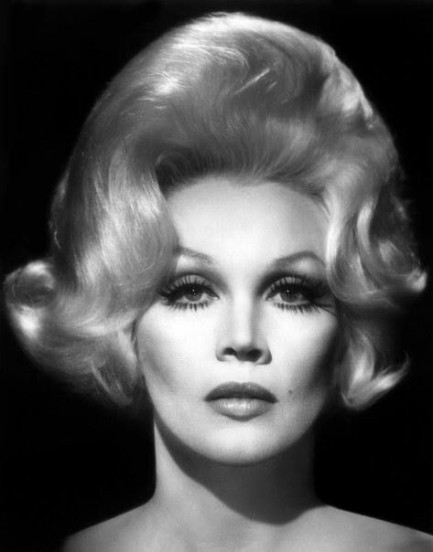
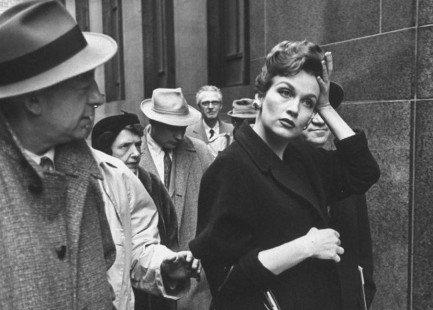
| Hollywoodland | The Naked City | Sep 23 2009 |

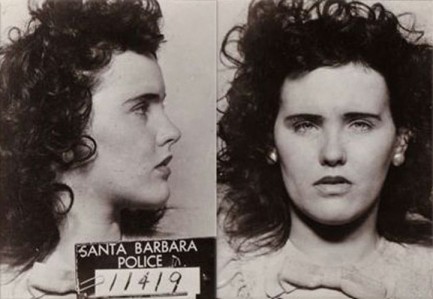
Elizabeth Short was just another girl drawn like a moth to the bright lights of Tinseltown. She dreamed of becoming a star, but instead became the victim of a horrific January 1947 murder. The killing was never solved, and its enduring strange- ness served as creative inspiration for numerous authors, including James Ellroy, who crafted a feverish, violent and definitive crime novel entitled The Black Dahlia.
Short was from Massachusetts, but drifted between there, California, and Florida. In 1946 she made a trip to L.A. to reunite with a boyfriend. Six months later she was dead—sexually mutilated, her mouth slashed open, her torso cut completely in half, the pieces carefully arranged in a vacant lot for passersby to discover. Veronica Lake’s film noir The Blue Dahlia was in cinemas at the time, and so reporters christened dark-haired Betty Short the Black Dahlia.
At Pulp we often speak of people passing from history, but they arrive as well. The moment Betty Short steps onto the stage is in the mug shot above, from today in 1943, when she was arrested in Santa Barbara, California for underage drinking. After the arrest juvenile authorities shipped her back east, but she didn’t stay. They never stay. She returned to L.A.—and became more famous than she ever could have imagined.
| Intl. Notebook | Jan 1 2009 |

.jpg)
Fifty years ago on this day, U.S.-installed dictator Fulgencio Batista fled Cuba, acknowledging defeat by socialist forces aligned with Fidel Castro. At the time Cuba was controlled by U.S. business interests and organized crime figures, with 75% of its land in foreign hands, and the capital of Havana serving as an international vice playground. It was known as the Monte Carlo of the Caribbean, and establishments like the Tropicana, San Souci, and Shanghai Theatre were famous for casinos, prostitutes, and totally nude cabaret shows. The El Dorado had an all female orchestra. Mobster Meyer Lansky was royalty. Luminaries such as Frank Sinatra, Nat King Cole, and Edith Piaf were regular headliners. Havana was simply the place to be.
Less than an hour from Florida by air, New York businessmen who’d told their wives they were at a Miami conference could be enjoying a Cuban whore by lunchtime, and be back in Dade County in time for bed and a phone call from the missus. Alternatively, they could stay all night, or for days at a time, and lose themselves in daiquiris, dancing girls, and the lure of forbidden Barrio Colón. It was paradise—at least if you were a foreigner or one of the wealthy Cubans in partnership with them. For the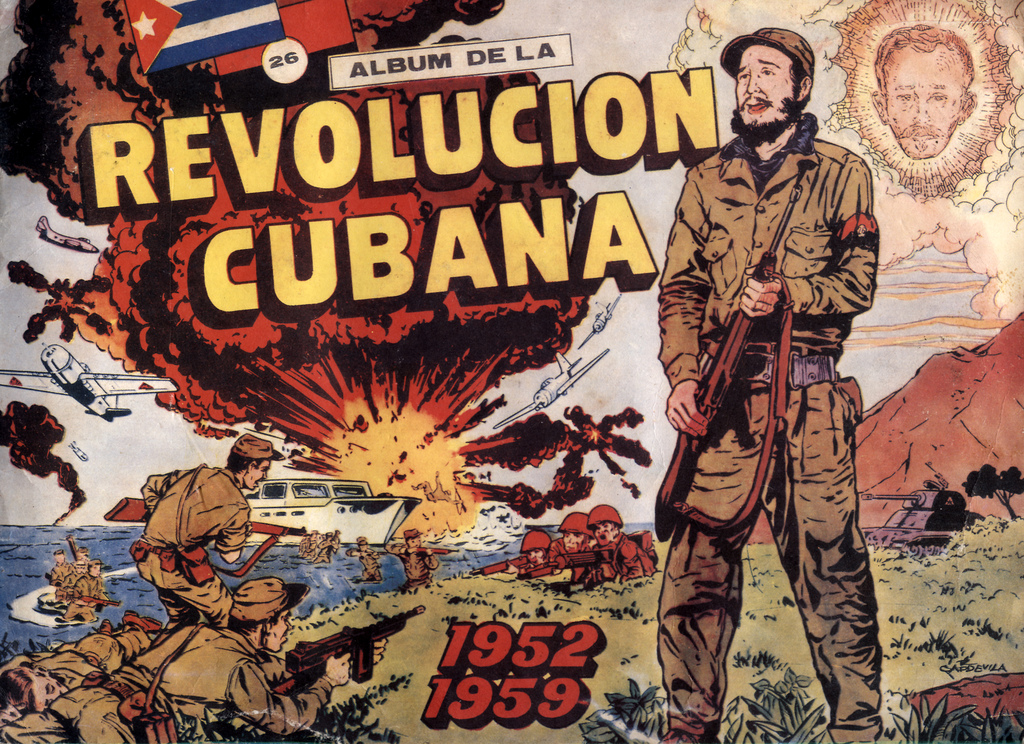 poor Havana was pure hell. The billions in revenue earned by casinos and hotels trickled not down, but out—into foreign bank accounts. Malnutrition, illiteracy, and crime were rampant. When Castro ran Batista off the island the party cautiously continued, because his political intentions were not immediately clear. Everyone knew the old system would change; nobody knew exactly how much. But for a brief, post-revolutionary moment Cuba remained open to foreigners, and so the expatriate carnival went on—albeit under a cloud.
poor Havana was pure hell. The billions in revenue earned by casinos and hotels trickled not down, but out—into foreign bank accounts. Malnutrition, illiteracy, and crime were rampant. When Castro ran Batista off the island the party cautiously continued, because his political intentions were not immediately clear. Everyone knew the old system would change; nobody knew exactly how much. But for a brief, post-revolutionary moment Cuba remained open to foreigners, and so the expatriate carnival went on—albeit under a cloud.
But the lines had already been drawn in the greatest ideological battle of modern times. U.S. president Dwight D. Eisenhower was using the CIA to train Cuban exiles for an invasion to oust the socialists, and Castro was planning to nationalize a corrupt capitalist economy that had excluded those who were too poor, too black, or too lacking in influence to get a seat at the big table. When Castro made nationalization official, the U.S. struck with an embargo, and followed up five months later with the failed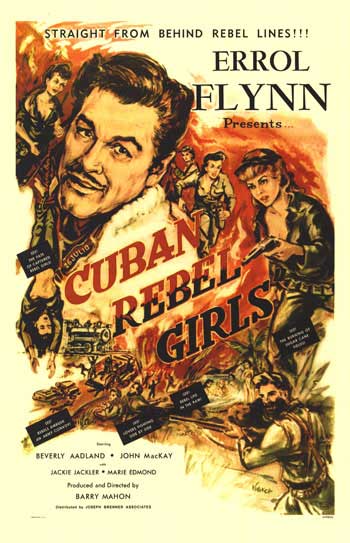 Bay of Pigs invasion. Since then the ideological battle lines have occasionally shifted, but Cuba remains the prize jewel of the war.
Bay of Pigs invasion. Since then the ideological battle lines have occasionally shifted, but Cuba remains the prize jewel of the war.
As historical events go, the Cuban Revolution, as well as its prelude and aftermath, have been invaluable to genre fiction, providing rich material for authors such as Graham Greene, James Ellroy and a literary who’s-who of others. It has been the subject of countless revisionist potboilers. Stephen Hunter’s Havana is perhaps the best of these novels, at least by an American writer. In that one Fidel’s fate is in the hands of a goodhearted redneck from Arkansas. Sent by the CIA, the heroic marksman is more than a match for the hapless Cubans, but does he really want to kill Castro?
Daniel Chevarría went Hunter one better and wrote several novels set in Cuba, including Tango for a Torturer and the award winner Adios Muchachos. Movies ranging from Errol Flynn’s piece-of-fluff Cuban Rebel Girls, to Wim Wenders’ inspiring Buena Vista Social Club, to Benicio del Toro’s heavyweight Ché have also used the island as a backdrop. Doubtless Cuba will provide material for as long as authors write and directors yell action, as its history continues to inspire, and its future continues to be in flux.
| Hollywoodland | Dec 2 2008 |

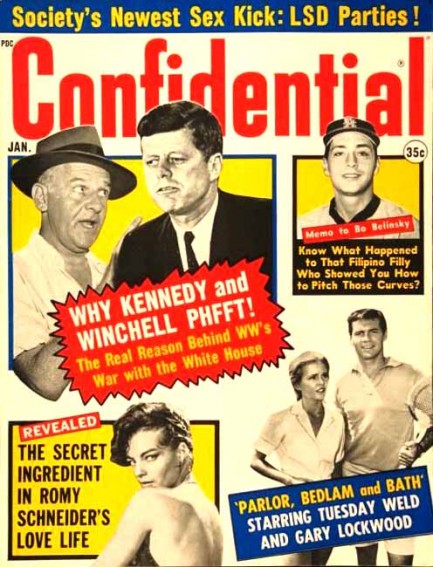
This month in 1952, right wing scandal rag Confidential hit newsstands for the first time. It was owned by Robert Harrison, who got his start in publishing at the New York Graphic, one of the earliest celebrity scandal sheets. Confidential was based in New York City, but its focus was Hollywood and its environs. To gather information Harrison cultivated a vast network of west coast informants—everyone from hotel concierges to taxicab dispatchers. The magazine was lurid, filled with doctored photos, and shamelessly exploitative of hot-button social fears. A typical issue might accuse Hollywood glitterati of using illegal drugs, sympathizing with communists, associating with other races, or working for the mob.
The formula worked. Within two years Confidential grew into a bestselling magazine. It screamed from American newsstands about interracial affairs, LSD parties, and backalley abortions, always in a glaring red-yellow motif that would become its visual trademark. Humphrey Bogart once famously called Robert Harrison “The King of Leer,” sentiments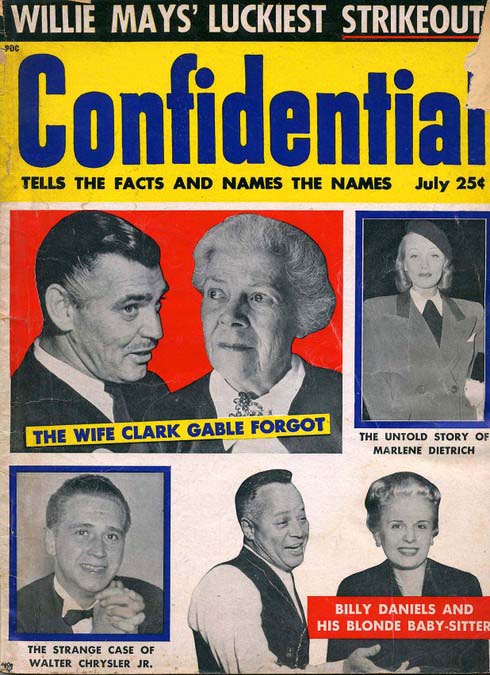 which were echoed throughout Hollywood. Stars were galled not just by the magazine’s constant attacks, but the fact that they originated from three-thousand miles away. It meant Confidential either fabricated its stories, or gathered info by means of spies. Neither possibility was pleasing to consider.
which were echoed throughout Hollywood. Stars were galled not just by the magazine’s constant attacks, but the fact that they originated from three-thousand miles away. It meant Confidential either fabricated its stories, or gathered info by means of spies. Neither possibility was pleasing to consider.
Hollywood began fighting back. Ronald Reagan, who at the time was a snitch for Tinseltown’s hated blacklisters, chaired a committee that smeared Confidential staff. Postmaster General Arthur Summerfield 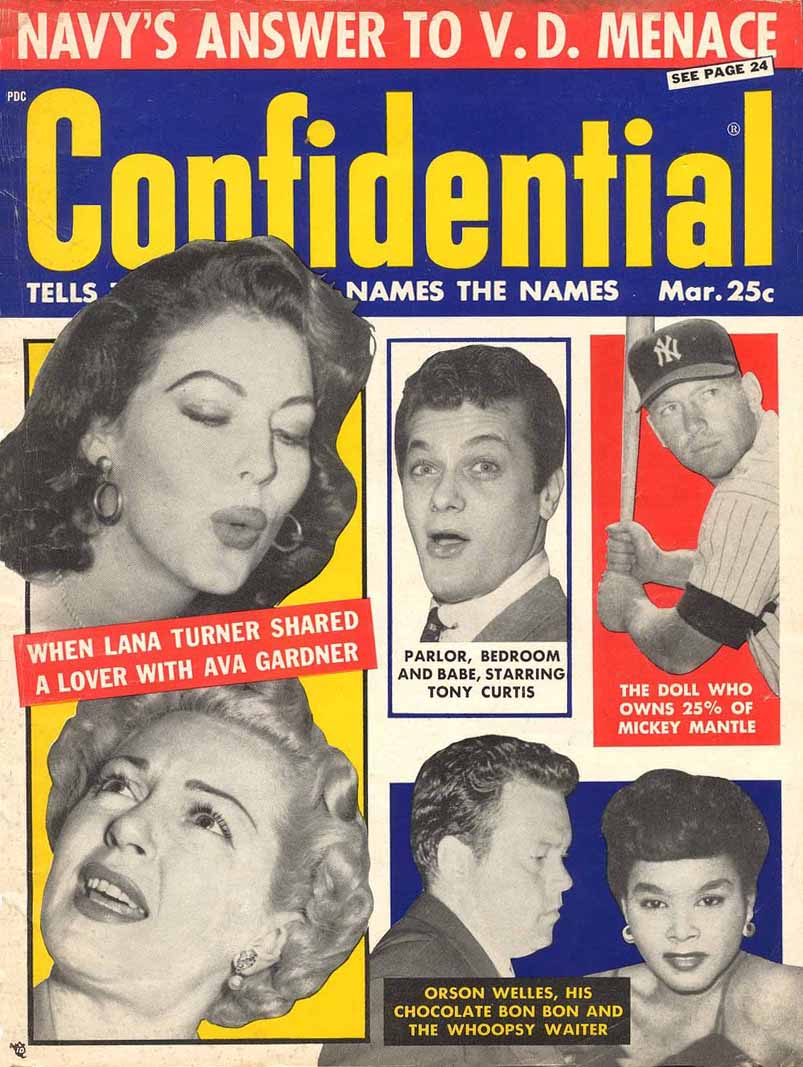
at one point banned mail delivery of the magazine. In 1957 the Kraft Commission put Robert Harrison on trial for conspiracy to publish criminal libel. The trial ended in a plea deal, but not before Hollywood stars realized their greatest ally was the legal system. Lawsuits kept Confidential in litigation from that point forward, and Harrison finally sold out in 1958.
The new owners managed to keep Confidential going, but mindful of lawsuits the magazine had lost under Harrison in 1956 and 1957, operated more cautiously. Soon, readers began to suspect the tabloid was no longer living up to its stated credo: “Telling the facts and naming the names”. Confidential stopped flying off newsstands. Sales dipped to a third what they had been at their zenith. A 1970s shift in editorial focus toward hippie counterculture did little to reverse fortunes, and Confidential finally folded in 1978.
Though defunct, its twenty-two year run was a success by almost any standard. Confidential outlasted a dozen competitors, and its influence extends into today’s newsstand tabloids, Hollywood-oriented television shows, celeb blogs, and even popular fiction. Author James Ellroy’s 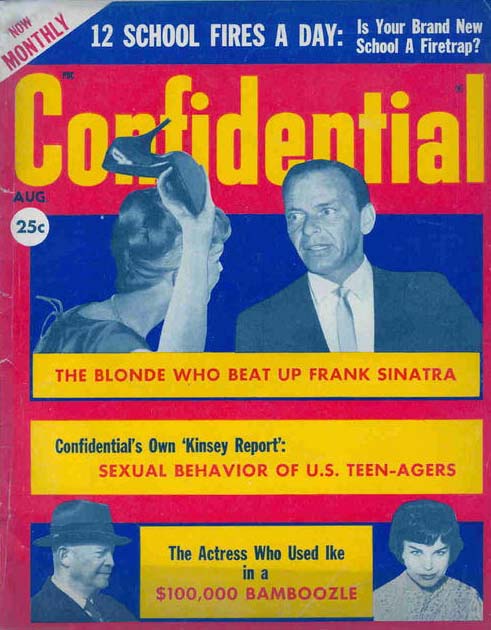
 award-winning pulp thrillers frequently reference Hush Hush, a Confidential copycat. And Pultizer Prize winning columnist Stephen Hunter wrote a bestselling thriller about the Mafia’s presence in Hot Springs, Arkansas during the 1950s, a subject Confidential covered in its very first issue.
award-winning pulp thrillers frequently reference Hush Hush, a Confidential copycat. And Pultizer Prize winning columnist Stephen Hunter wrote a bestselling thriller about the Mafia’s presence in Hot Springs, Arkansas during the 1950s, a subject Confidential covered in its very first issue.




































































